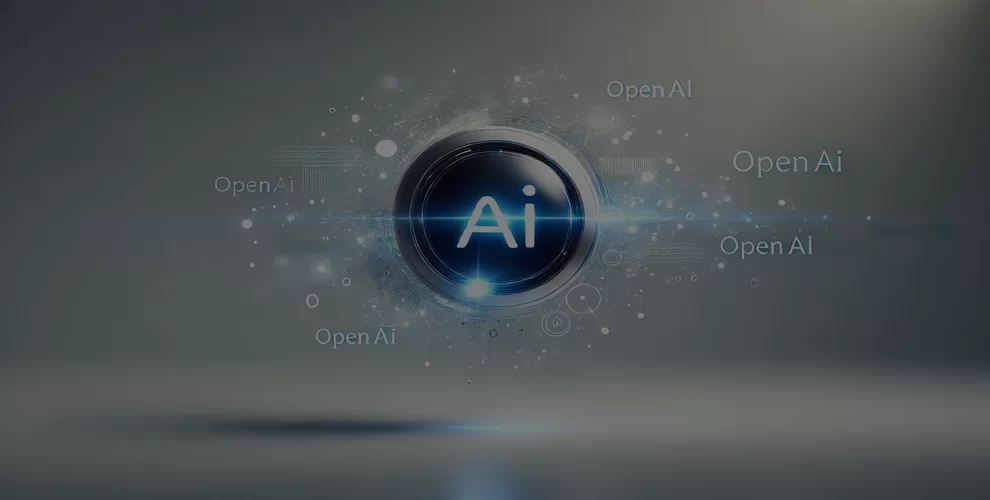
Top 10 AI Innovations by OpenAI You Need to Know About
Table of Contents
Introduction
OpenAI has consistently been at the forefront of artificial intelligence research and development, pushing the boundaries of what AI can achieve.
From language models to quantum computing, OpenAI’s innovations are transforming industries and improving lives.
This article explores the top 10 groundbreaking innovations by OpenAI and their impact on various sectors.
Key Takeaways
- Transformative Technologies: OpenAI’s innovations, such as GPT-4 and multimodal AI, are revolutionizing how we interact with technology, enhancing user experiences, and expanding AI applications across different industries.
- Practical Applications: OpenAI’s advancements in healthcare, cybersecurity, drug discovery, and customized enterprise models demonstrate the practical benefits of AI in improving efficiency, security, and personalized services.
- Ethical and Transparent AI: OpenAI’s commitment to explainable AI and open source models ensures transparency, reduces biases, and promotes ethical AI development, fostering greater trust and accessibility.
Multimodal AI
Combining Text, Images, and Sound
Enhancing User Interaction
Multimodal AI integrates various data types, such as text, images, and sound, to provide a more comprehensive understanding and interaction. This innovation mimics human sensory processing, enabling AI to interpret and generate content that appeals to multiple senses.
Real-World Applications
In healthcare, multimodal AI can analyze medical images alongside patient history and genetic information to improve diagnostic accuracy. It also extends design and coding capabilities to non-experts, allowing broader access to creative tools and applications.
GPT-4 and Beyond
Advancements from GPT-3 to GPT-4
Increased Parameters and Capabilities
GPT-4 builds on the success of GPT-3 with significantly more parameters, enhancing its ability to understand and generate human-like text. This leap in capacity allows for more accurate and complex language processing tasks.
Practical Applications and Examples
GPT-4’s advanced capabilities enable applications in customer service, content creation, and education. For instance, it can draft detailed reports, provide tutoring in various subjects, and generate creative content for marketing purposes.
Reinforcement Learning
Training AI Agents
Decision-Making Processes
Reinforcement learning trains AI agents through a system of rewards and penalties, encouraging optimal behavior over time. This approach allows AI to make more informed and effective decisions based on past interactions.
Applications in Robotics and Virtual Assistants
Reinforcement learning is used to teach robots navigation and task execution. It also powers virtual assistants to interact more naturally and effectively with users, providing personalized assistance and improving user satisfaction.
Explainable AI (XAI)
Understanding AI Decisions
Transparency in AI
Explainable AI (XAI) focuses on making the decision-making processes of AI systems transparent and understandable to humans. This is crucial for building trust, as users can see how and why an AI system arrived at a particular decision or prediction.
Reducing Bias and Improving Trust
By providing insights into the workings of AI models, XAI helps identify and mitigate biases, ensuring fair and ethical AI usage. This transparency boosts user confidence and promotes the responsible deployment of AI technologies in sensitive areas like finance and healthcare.
AI in Healthcare
Revolutionizing Diagnosis and Treatment
Personalized Medicine
AI is transforming healthcare by enabling personalized medicine. By analyzing patient data, including genetic information, AI can predict how individuals will respond to different treatments, allowing for tailored healthcare plans that improve outcomes.
Predictive Analytics
AI’s predictive analytics capabilities help in early diagnosis and treatment planning. For example, AI can identify patterns in medical data to predict disease outbreaks or the likelihood of a patient developing a particular condition, facilitating timely and effective interventions.
AI in Drug Discovery
Accelerating Research and Development
Identifying Drug Targets
AI streamlines the drug discovery process by quickly analyzing vast datasets to identify potential drug targets. This accelerates the initial stages of drug development, making it faster and more cost-effective to bring new treatments to market.
Assessing Efficacy and Safety
AI can evaluate the efficacy and safety of new drug compounds more accurately by simulating their effects in various scenarios. This reduces the risk of adverse outcomes in clinical trials and helps in the development of more effective and safer medications.
AI in Cybersecurity
Enhancing Protection and Detection
Analyzing Risk Data
AI enhances cybersecurity by analyzing large volumes of risk data to detect threats and vulnerabilities. This proactive approach allows for the early identification and mitigation of potential security breaches.
Preventing Cyber Attacks
AI-driven systems can predict and prevent cyber attacks by recognizing patterns and anomalies in network traffic. These systems can respond to threats in real time, providing robust protection against malware, ransomware, and other cyber threats.
Open Source AI
Democratizing AI Access
Community Contributions
Open source AI models allow developers and researchers worldwide to contribute to and build on existing AI technologies. This collaborative approach accelerates innovation and makes advanced AI tools accessible to a broader audience.
Ethical Development
Open source AI promotes transparency and ethical development by allowing the community to inspect and improve the code. This helps identify biases, enhance security, and ensure that AI technologies are developed responsibly.
Customized Enterprise Generative AI Models
Tailoring AI for Specific Needs
Cost and Efficiency Benefits
Customized generative AI models are tailored to specific business needs, improving efficiency and reducing costs. These models are fine-tuned for particular tasks, providing more accurate and relevant outputs for enterprise applications.
Improved Privacy and Security
Building proprietary AI models enhances privacy and security by keeping sensitive data in-house. Enterprises can control how data is used and ensure compliance with regulations, reducing the risk of data breaches and misuse.
AI and Quantum Computing
Leveraging Quantum Mechanics
Speed and Efficiency Improvements
Quantum computing, combined with AI, significantly improves processing speed and efficiency. Quantum computers can handle complex calculations and simulations that are beyond the capabilities of traditional computers, accelerating AI development.
Solving Complex Problems
AI-powered quantum computing can solve complex problems in fields like cryptography, materials science, and financial modeling. This innovation opens up new possibilities for research and development, pushing the boundaries of what technology can achieve.
Conclusion
OpenAI’s innovations are at the cutting edge of artificial intelligence, driving significant advancements across various industries.
By promoting transparency, reducing biases, and enabling personalized solutions, OpenAI is at the forefront of responsible and impactful AI development.
Stay ahead in the ever-evolving tech world by exploring these innovations. Want to know more?
Dive into our latest article on how emotional intelligence in AI is revolutionizing human-machine interaction!
FAQs
What is multimodal AI and how does it work?
Multimodal AI integrates various data types like text, images, and sound to enhance user interaction and provide comprehensive understanding. It mimics human sensory processing, enabling AI to interpret and generate content that appeals to multiple senses.
How is GPT-4 different from GPT-3?
GPT-4 builds on the success of GPT-3 with significantly more parameters, enhancing its ability to understand and generate human-like text. It offers advanced capabilities for applications in customer service, content creation, and education.
What are the benefits of explainable AI (XAI)?
Explainable AI makes AI decision-making processes transparent and understandable, helping to identify and mitigate biases. This transparency builds trust and ensures responsible AI deployment in areas like finance and healthcare.
How does AI improve drug discovery?
AI accelerates drug discovery by quickly analyzing vast datasets to identify potential drug targets and evaluate their efficacy and safety. This streamlines the research process, making it faster and more cost-effective to develop new treatments.
What are the advantages of customized enterprise generative AI models?
Customized generative AI models tailored to specific business needs improve efficiency, reduce costs, and enhance privacy and security. These models provide accurate and relevant outputs, ensuring compliance with regulations and protecting sensitive data.
Want to keep up with our blog?
Our most valuable tips right inside your inbox, once per month.
Error: Contact form not found.
WikiGlitz Team
Welcome to WikiGlitz, your ultimate destination for tech insights and innovation. Our expert team is dedicated to delivering free resources and professional advice on various technology topics, including Artificial Intelligence, Cyber Security, Cloud Computing, and more. We strive to empower our readers with up-to-date information and practical guidance, ensuring you stay ahead in the rapidly evolving tech landscape. At WikiGlitz, we are passionate about making complex technology accessible to everyone. Our team of seasoned experts curates content that is both informative and engaging, helping you understand and leverage the latest tech trends. Whether you're a tech enthusiast or a professional, WikiGlitz is your go-to source for reliable, expert-driven content. Join us on this journey to explore and embrace the future of technology.





